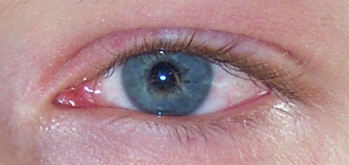Definition
Inclusion conjunctivitis is an inflammation of the conjunctiva (the membrane that lines the eyelids and covers the white part, or sclera, of the eyeball) by Chlamydia trachomatis. Chlamydia is a sexually transmitted organism.
Description
Inclusion conjunctivitis, known as neonatal inclusion conjunctivitis in the newborn and adult inclusion conjunctivitis in the adult, is also called inclusion blennorrhea, chlamydial conjunctivitis, or swimming pool conjunctivitis. This disease affects four of 1,000 (0.4%) live births. Approximately half of the infants born to untreated infected mothers will develop the disease.
Causes & symptoms
Inclusion conjunctivitis in the newborn results from passage through an infected birth canal and develops 5-14 days after birth. Both eyelids and conjunctivae are swollen. There may be a discharge of pus from the eyes.
Most instances of adult inclusion conjunctivitis result from exposure to infected genital secretions. It is transmitted to the eye by fingers and occasionally by the water in swimming pools, poorly chlorinated hot tubs, or by sharing makeup. In adult inclusion conjunctivitis, one eye is usually involved, with a stringy discharge of mucus and pus. There may be little bumps called follicles inside the lower eyelid and the eye is red. Occasionally, the condition damages the cornea, causing cloudy areas and a growth of new blood vessels (neovascularization).
Diagnosis
Inclusion conjunctivitis is usually considered when the patient has a follicular conjunctivitis that will not go away, even after using topical antibiotics. Diagnosis depends upon tests performed on the discharge from the eye. Gram stains determine the type of microorganism, while culture and sensitivity tests determine which antibiotic will kill the harmful microorganism. Conjunctival scraping determines whether chlamydia is present in cells taken from the conjunctiva.
Treatment
Treatment in the newborn consists of administration of tetracycline ointment to the conjunctiva and erythromycin orally or through intravenous therapy for fourteen days. The mother should be treated for cervicitis and the father for urethritis, even if they do not have symptoms of these diseases.
In adults, tetracycline ointment or drops should be applied to the conjunctiva and oral tetracycline, amoxacillin, or erythromycin should be taken for three weeks, or doxycycline for one week.
Patients should have weekly checkups so the doctor can monitor the healing.
Oral tetracycline should not be administered to children whose permanent teeth have not erupted. It should also not be given to nursing or pregnant women.
Prognosis
Untreated inclusion conjunctivitis in the newborn persists for 3-12 months and usually heals; however, there may be scarring or neovascularization. In the adult, if left untreated, the disease may continue for months and cause corneal neovascularization. Even if treated, antibiotics usually do not reverse damage that may have occurred, but they may help prevent it if given early enough.
Prevention
The neonatal infection may be prevented by instilling erythromycin ointment in the conjunctival cul-de-sac at birth. It is not prevented by silver nitrate.
Chlamydia is a contagious, sexually transmitted disease. Some systemic symptoms include a history of vaginitis, pelvic inflammatory disease, or urethritis. Patients with symptoms of these diseases should be treated by a physician.
Key Terms
- Cervicitis
- Cervicitis is an inflammation of the cervix or neck of the uterus.
- Conjunctiva
- The conjunctiva is the membrane that lines the eyelids and covers the white part of the eyeball (sclera).
- Cornea
- The clear dome-shaped structure that covers the colored part of the eye (iris).
- Neovascularization
- Neovascularization is the growth of new blood vessels.
- Urethritis
- Urethritis is an inflammation of the urethra, the canal for the discharge of urine that extends from the bladder to the outside of the body.
Further Reading
For Your Information
Books
- Newell, Frank W. Ophthalmology: Principles and Concepts. Boston, MA: Mosby, 1996.
Organizations
- American Academy of Ophthalmology. P.O. Box 7424, San Francisco CA 94120-7424. (415) 561-8500. http://www.eyenet.org.
- American Optometric Association. 243 North Lindbergh Blvd., St. Louis, MO 63141. (314) 991-4100. http://www.aoanet.org.
Gale Encyclopedia of Medicine. Gale Research, 1999.



